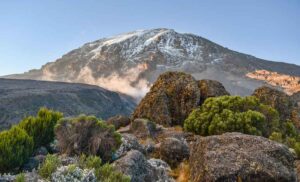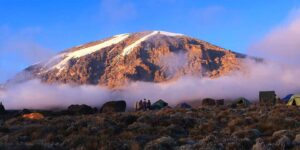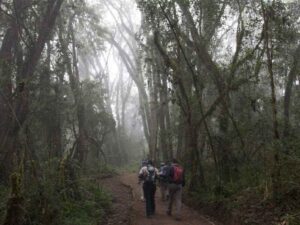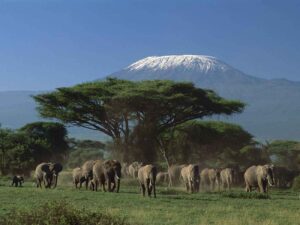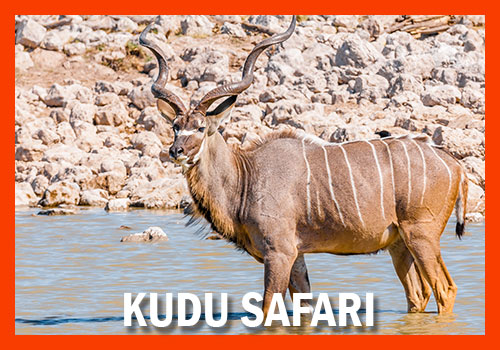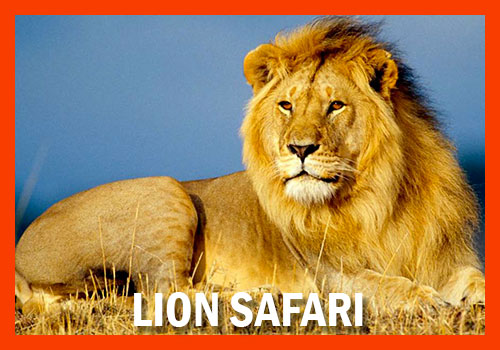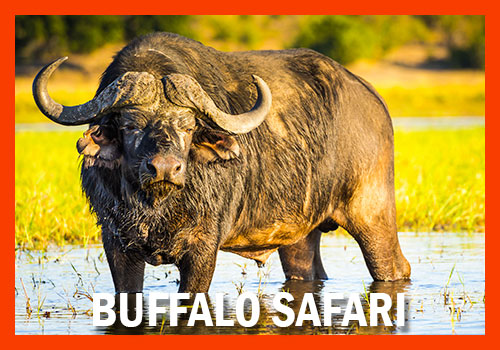KILIMANJARO NATIONAL PARK
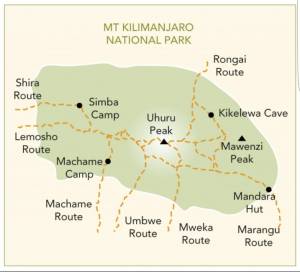
Kilimangiaro Map
The National Park of Kilimanjaro, or Kilimanjaro National Park, is one of the most famous nature parks in all of Tanzania, a popular destination for safaris, hiking, and beautiful nature tours.
The history of the park begins in 1910, when a German colony declared its huge surface area a nature reserve owned by Germany. Kilimanjaro Park was only opened up to the public in 1977 and was reclassified as a National Park, before becoming a UNESCO World Heritage Site in 1987.
Its reputation, making it one of the most popular safari destinations in Tanzania, is obviously due to the magnificent Mount Kilimanjaro, which in addition to being the tallest mountain in Africa, is also one of the tallest volcanoes in the world, with its summit covered by a perennial glacier called Rebmann’s Glacier, in honor of the first explorer to reach the peak.
The flora and fauna of Kilimanjaro National Park
Located in the north-east of Tanzania, Kilimanjaro Park covers an area of 756 km², and is home to thousands of animal and plant species. The park is so vast and elevated that the vegetation is divided into 4 macro-areas, owing to the great diversity between them.
- From 1801 m to 2700 m is the rain forest area, perhaps the richest flora zone in the entire park, where trees of incredible heights stand out.
- From 2700 m to 4000 m is the moorland area, where temperatures are cooler and the trees give way to shrubs.
- From 4000 m up to 5000 m is the high altitude desert area.
- From 5000 m to 5895 m we are in the summit area of Mount Kilimanjaro, where we can find nothing but snow and ice.
In addition to a lush and varied flora, Kilimanjaro National Park offers a rich variety of animal species, which includes about 140 species of mammals, including 7 different species of primates, 25 species of carnivores, 25 species of antelopes, and 24 species of bats.
While on a safari in the Park, you will see hundreds of African elephants, baboons, and other primates. Other animals you will frequently encounter are antelopes and cudus.
Mount Kilimanjaro
Kilimanjaro is actually a stratovolcano with three different craters: Shira to the west (3962 m), Mawenzi to the east (5149 m) and Kibo in the middle, which at 5895 m is also the highest peak. At about 3600 m, between Kibo and Mawenzi, is the “saddle”, the largest high tundra on the continent.
Kilimanjaro, or Chilimanjaro, is an extinct volcano, although sulphur and vapours are still released from the openings at the centre of the crater.
The main entrance to the park is the Marangu Gate in north-eastern Tanzania, at an altitude of 1870m.
This is the lowest part of the plateau that can be reached by jeeps, like those that will take you on our safaris in Tanzania, and offers beautiful views of the Great Rift Valley and Mount Meru.
You can go on a day long hike on Mount Kilimanjaro, visiting the foot of the “Roof of Africa”, where there is a lush rainforest dominated by tall trees, home to several animals such as buffaloes, baboons, guenons, leopards and eland antelopes, and a variety of birds, including abbot’s starlings, which are very rare outside this area. You can also visit the nearby and picturesque lake Chala, which sits in a caldera on the eastern border of Mount Kilimanjaro, with hues ranging from turquoise to emerald green depending on the season.
Climbing up the peak of Kilimanjaro, which takes at least 5 days, must be done with a compulsory guide and porters, who also play the role of cooks, as there is no restaurant service in the shelters located along the way. The Via Marangu is the main way up the summit of Kilimanjaro, and is the only one with good signs, and where overnight stays can take place in wooden shelters, as well as in tents carried by the porters of the expedition.
Each year, the ascent to the top of Kilimanjaro attracts a large number of hikers, both for its breathtaking views and the fact that it is possible to walk all the way to the top without ropes, thus requiring no special technical climbing experience. However, it is always important to have adequate preparation to deal with the fatigue and high altitude.
Although the climb can be done throughout the year, the best period is undoubtedly the dry season, from June to October and from December to February, when the probability of experiencing good weather is higher.


